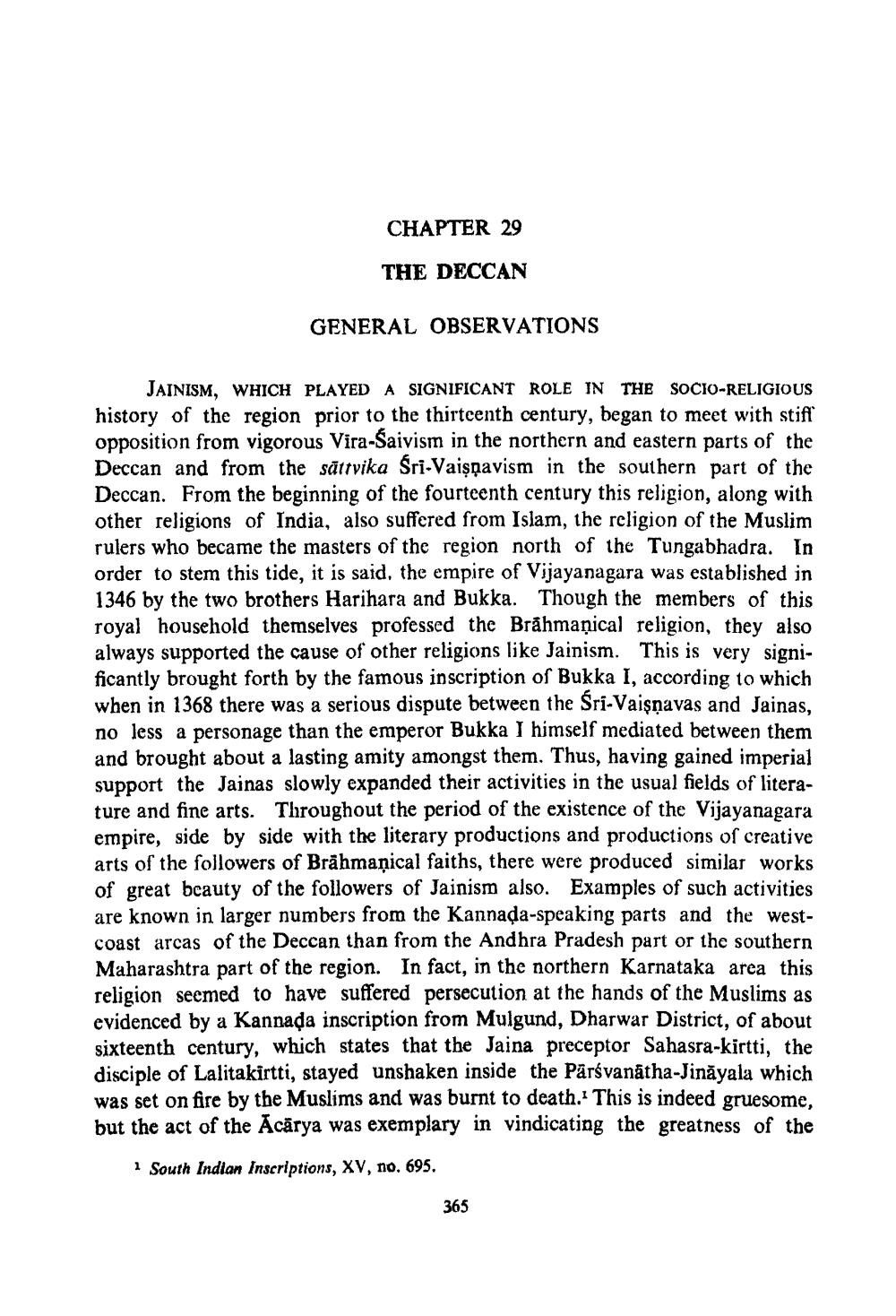________________
CHAPTER 29
THE DECCAN
GENERAL OBSERVATIONS
JAINISM, WHICH PLAYED A SIGNIFICANT ROLE IN THE SOCIO-RELIGIOUS history of the region prior to the thirteenth century, began to meet with stiff opposition from vigorous Vira-Saivism in the northern and eastern parts of the Deccan and from the sättvika Sri-Vaişpavism in the southern part of the Deccan. From the beginning of the fourteenth century this religion, along with other religions of India, also suffered from Islam, the religion of the Muslim rulers who became the masters of the region north of the Tungabhadra. In order to stem this tide, it is said, the empire of Vijayanagara was established in 1346 by the two brothers Harihara and Bukka. Though the members of this royal household themselves professed the Brāhmaṇical religion, they also always supported the cause of other religions like Jainism. This is very significantly brought forth by the famous inscription of Bukka I, according to which when in 1368 there was a serious dispute between the Sri-Vaisnavas and Jainas, no less a personage than the emperor Bukka I himself mediated between them and brought about a lasting amity amongst them. Thus, having gained imperial support the Jainas slowly expanded their activities in the usual fields of literature and fine arts. Throughout the period of the existence of the Vijayanagara empire, side by side with the literary productions and productions of creative arts of the followers of Brāhmaṇical faiths, there were produced similar works of great bcauty of the followers of Jainism also. Examples of such activities are known in larger numbers from the Kannada-speaking parts and the westcoast arcas of the Deccan than from the Andhra Pradesh part or the southern Maharashtra part of the region. In fact, in the northern Karnataka area this religion seemed to have suffered persecution at the hands of the Muslims as evidenced by a Kannada inscription from Mulgund, Dharwar District, of about sixteenth century, which states that the Jaina preceptor Sahasra-kirtti, the disciple of Lalitakirtti, stayed unshaken inside the Pārsvanátha-Jināyala which was set on fire by the Muslims and was burnt to death. This is indeed gruesome, but the act of the Acārya was exemplary in vindicating the greatness of the
1 South Indian Inscriptions, XV, no. 695.
365




